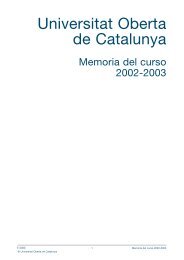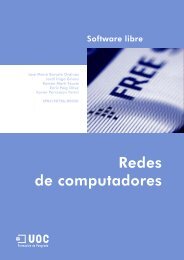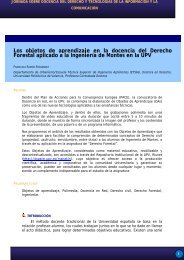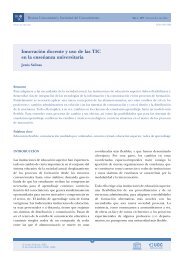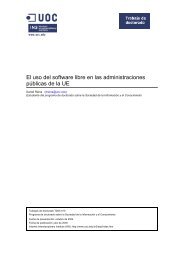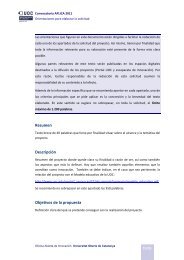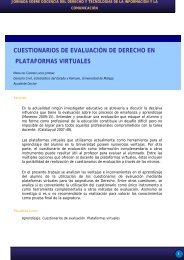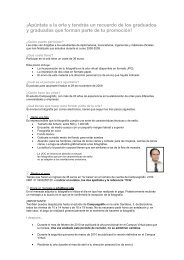e-governance and citizen information - Universitat Oberta de ...
e-governance and citizen information - Universitat Oberta de ...
e-governance and citizen information - Universitat Oberta de ...
You also want an ePaper? Increase the reach of your titles
YUMPU automatically turns print PDFs into web optimized ePapers that Google loves.
E-<strong>governance</strong> <strong>and</strong> Citizen Information 91 Structure <strong>and</strong> Organisation5.5. Internal Decision-making <strong>and</strong> the Centralisation of Information <strong>and</strong>ManagementCooperation <strong>and</strong> transversality also have a structural perspective relating to the transformationsin <strong>de</strong>cision-making <strong>and</strong> the organisation <strong>and</strong> management of <strong>information</strong>. Connectedto the process of the horizontalisation of tasks, a similar process in <strong>de</strong>cision-making canarise, in other words, transformations towards a co-<strong>de</strong>cision or even co-management. Theopposite processes would lead, at one extreme, towards the centralisation of <strong>de</strong>cision making<strong>and</strong>, at the other, to a dispersion towards a higher level of discretion for agents.In or<strong>de</strong>r to analyse <strong>de</strong>cision making, It is necessary to consi<strong>de</strong>r the actors who take part <strong>and</strong>the procedures followed; however, here we shall focus only on what happens with respectto the strictly internal functioning of the Generalitat.The centralisation of <strong>de</strong>cision-making regarding IS areas has clear consequences for theday-to-day functioning of Citizen Information services <strong>and</strong> IT organisation with respect to <strong>de</strong>cision-makingmechanisms.In the section above we pointed out the administrative units' high level of discretion with regardto <strong>information</strong> policy. Going somewhat <strong>de</strong>eper into this aspect, one of the interviewees explainedwhat the specific situation was in their <strong>de</strong>partment: “there isn't centralisation in a singleunit of <strong>information</strong>: some use the Web <strong>and</strong> others use the SAC, the registry offices <strong>and</strong> faceto-facecontact”. In fact, “until now there hasn't been a formal relationship” between both unitsin <strong>information</strong> management (P23). Although in some <strong>de</strong>partments the units in charge of givingout <strong>information</strong> are more focused, in others we have observed that this scheme is repeated oreven worsened (incorporating more divisions <strong>and</strong> more people from different units).Despite this situation of internal dispersion of the <strong>de</strong>partments, corporately speaking someinterviewees also pointed out a ten<strong>de</strong>ncy towards actions seeking to bring together areas ofresponsibility <strong>and</strong> <strong>de</strong>cision-making in <strong>information</strong> policy. This is what happened in the caseof the Citizen Information Department. One of the interviewees explained to us the changesthat had taken place: “for the time being the areas of responsibility are the same but the differenceis that politically <strong>and</strong> on a budget level the Citizen Information Department now hasmuch more support”, an element that, amongst other things, has gone h<strong>and</strong> in h<strong>and</strong>, for example,“with a growth in the number of people” (P17) working there (practically doubling thestaff in three years).With respect to the area of <strong>information</strong> organisation we have seen how its historic organisationis also an explanatory factor in the dispersion of solutions adopted by thehttp://www.uoc.edu/in3/pic




